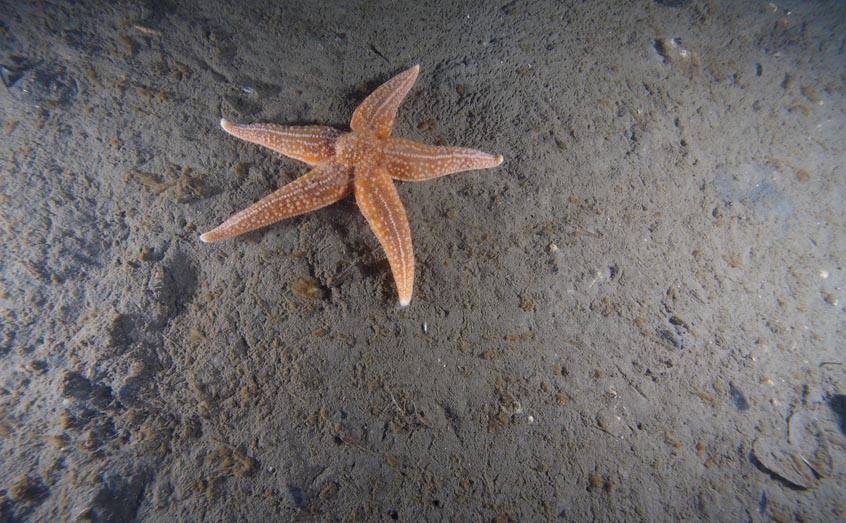SAMS news room
Marine scientists conduct UK seabed health check

A group of UK scientists has published extensive research following a large-scale health check on the UK’s seabed.
The researchers looked into how industry and environmental change are affecting our seafloors and concluded more work must be done to safeguard these complex ecosystems and the benefits they provide.
As part of a large research consortium involving eight UK institutions and organisations, an intensive sampling campaign included three scientific cruises in just six months to examine areas of ocean located on the UK continental shelf. This helped scientists understand the sensitivity of these systems to human activities. The societal importance of these ecosystems extends beyond food production to include biodiversity, carbon cycling and storage, waste disposal, nutrient cycling, recreation and renewable energy.
The research findings are published today (Monday) in a special issue of the journal Biogeochemistry.
Martin Solan, lead principal investigator and Professor in Marine Ecology at the University of Southampton, said: “Our seafloors are teaming with life, from microscopic organisms, to larger creatures such as fish and crabs. All interact as part of a complex system which plays a vital role in maintaining the health of the seabed and the rest of food web.
“Human intervention, such as fishing, pollution and activities causing climate change are all affecting these finely balanced ecosystems. Collectively, our research provides us with a new perspective on how the seafloor is being modified, for better or for worse, – but more research is now needed to understand the longer-term consequences of such change for the wider environment and for society at large.”
The research team analysed the biodiversity, nutrient, metal and carbon cycling in areas of the seafloor around the UK, subject to different environmental conditions and human use.
Scientists at the Scottish Association for Marine Science (SAMS) measured how oxygen concentrations varied within the seafloor of the Celtic Sea. The researchers measured how levels of oxygen changed over the seasons and between the different sediment types. Importantly, their results gave valuable information on the importance of the seafloor in removing carbon dioxide from the atmosphere. In addition, disturbance to these habitats can negatively affect the carbon storage potential of these sediments.
Dr Natalie Hicks, who led the SAMS research, said: “Much of the global nutrient and carbon cycling takes place in the seabed. Oxygen cycling there changes with different sediment types and with seasonal changes – rising global temperature means the oxygen dynamics are likely to be affected, so understanding the complexities between different habitat types (sediments) is important for predicting implications.”
The variety of projects which the Biogeochemistry special issue brings together, were conducted on three dedicated research cruises and other expeditions around the UK. The research is part of a special issue of the scientific journal Biogeochemistry and includes contributions from SAMS, the University of Southampton, the Centre for Environment, Fisheries and Aquaculture Science (CEFAS), the National Oceanography Centre (NOC), University of Portsmouth, University of Oxford, Bangor University and Plymouth Marine Laboratory.
Dr Phil Williamson, from the University of East Anglia, who helped coordinate this research programme, said: "Much of what happens in the sea is out of sight and out of mind. This study has provided a wealth of insights into the natural recycling processes that are literally at the base of marine ecosystems, underpinning the many benefits that we obtain from the sea.”
The Shelf Sea Biogeochemistry Special Issue can be found at: https://link.springer.com/journal/10533/135/1/page/1
The research was part of the Shelf Sea Biogeochemistry programme, investigating how natural and human processes interact in the seas around the UK.
